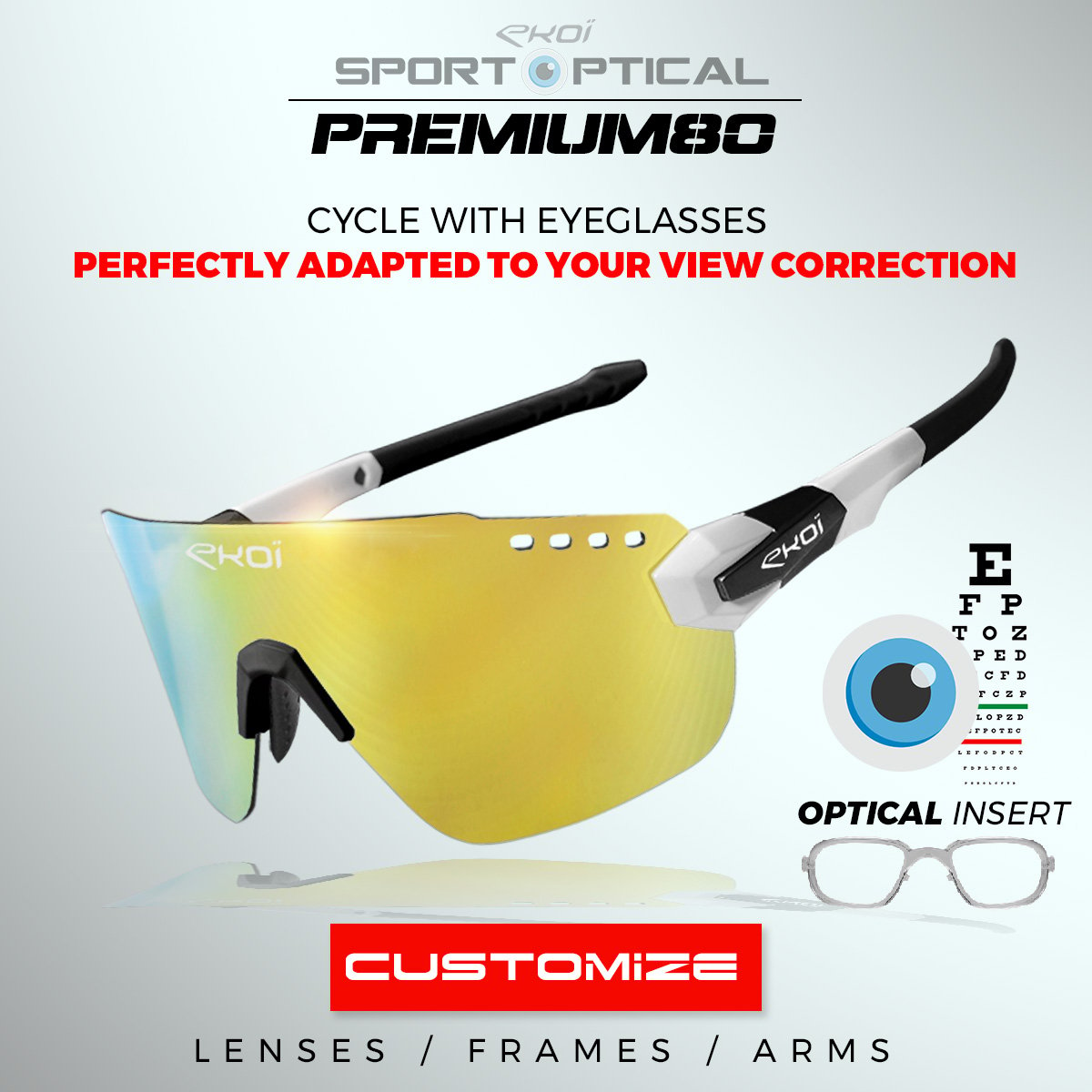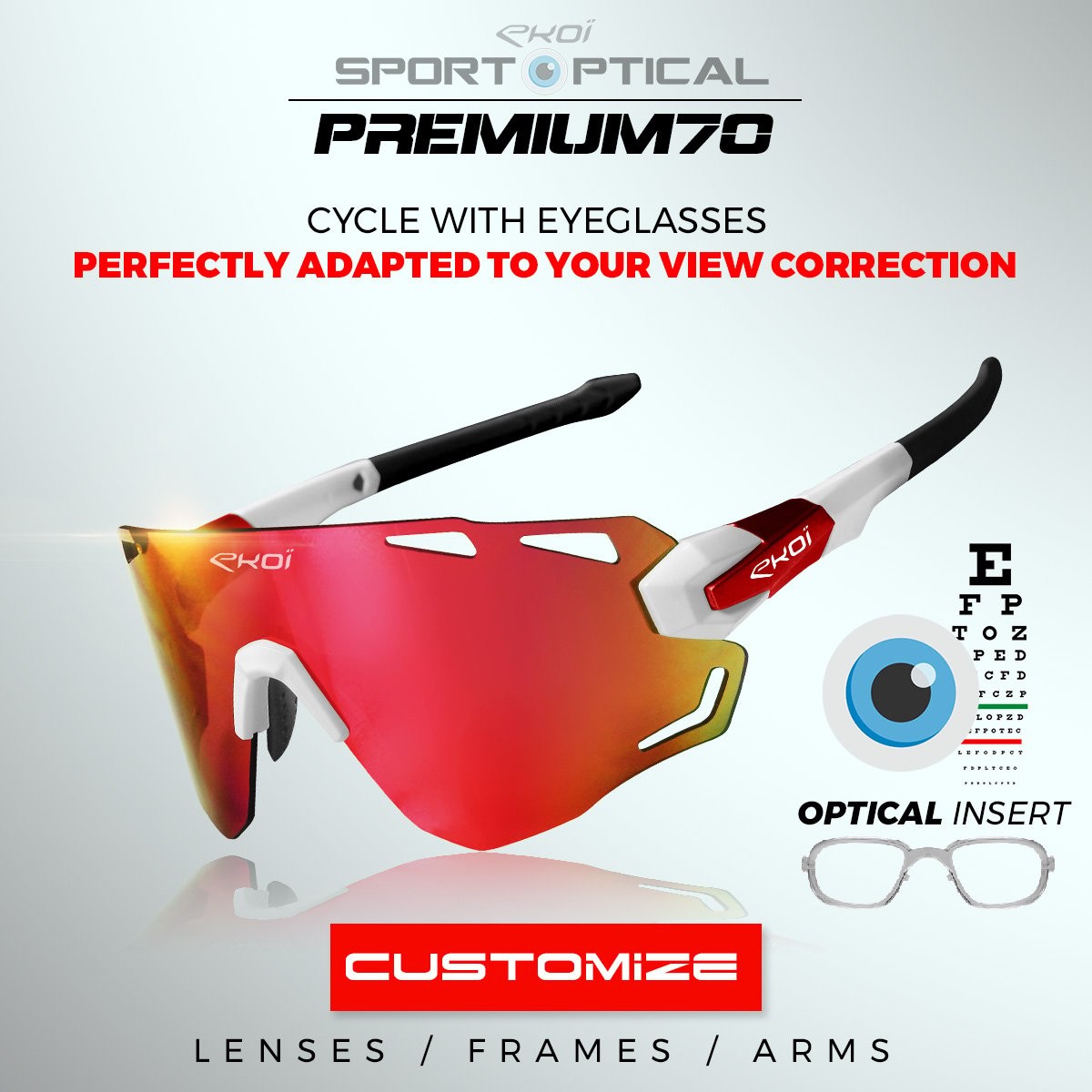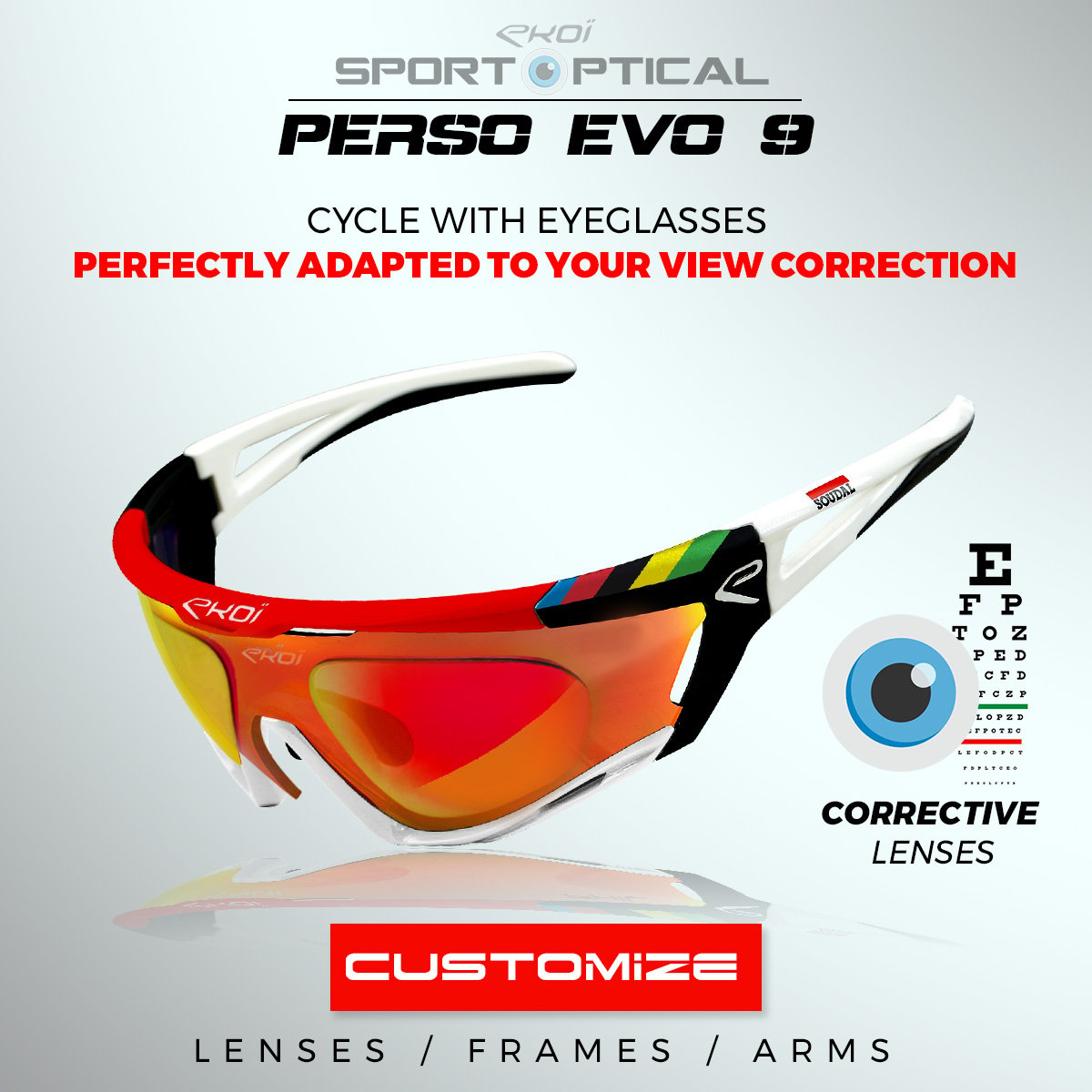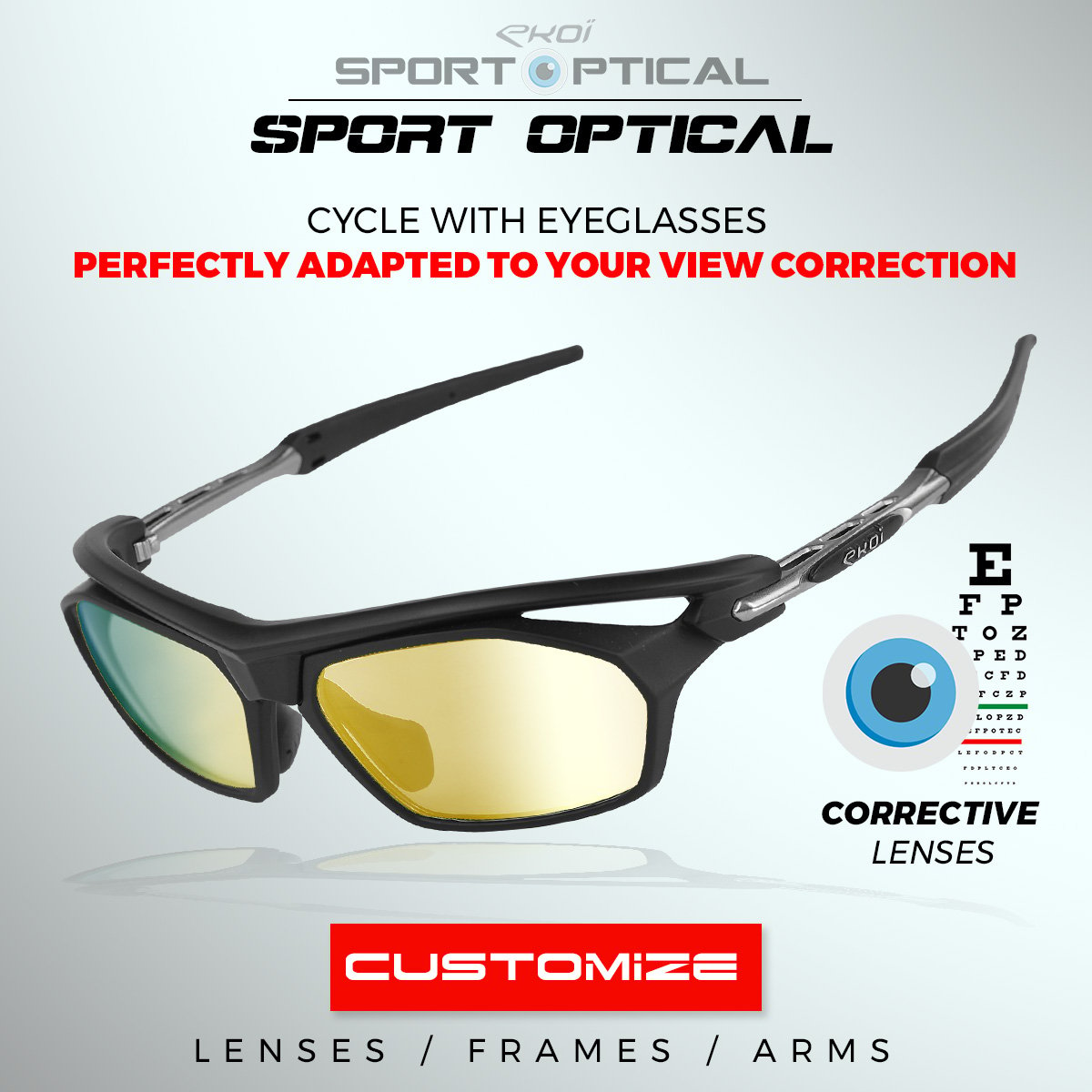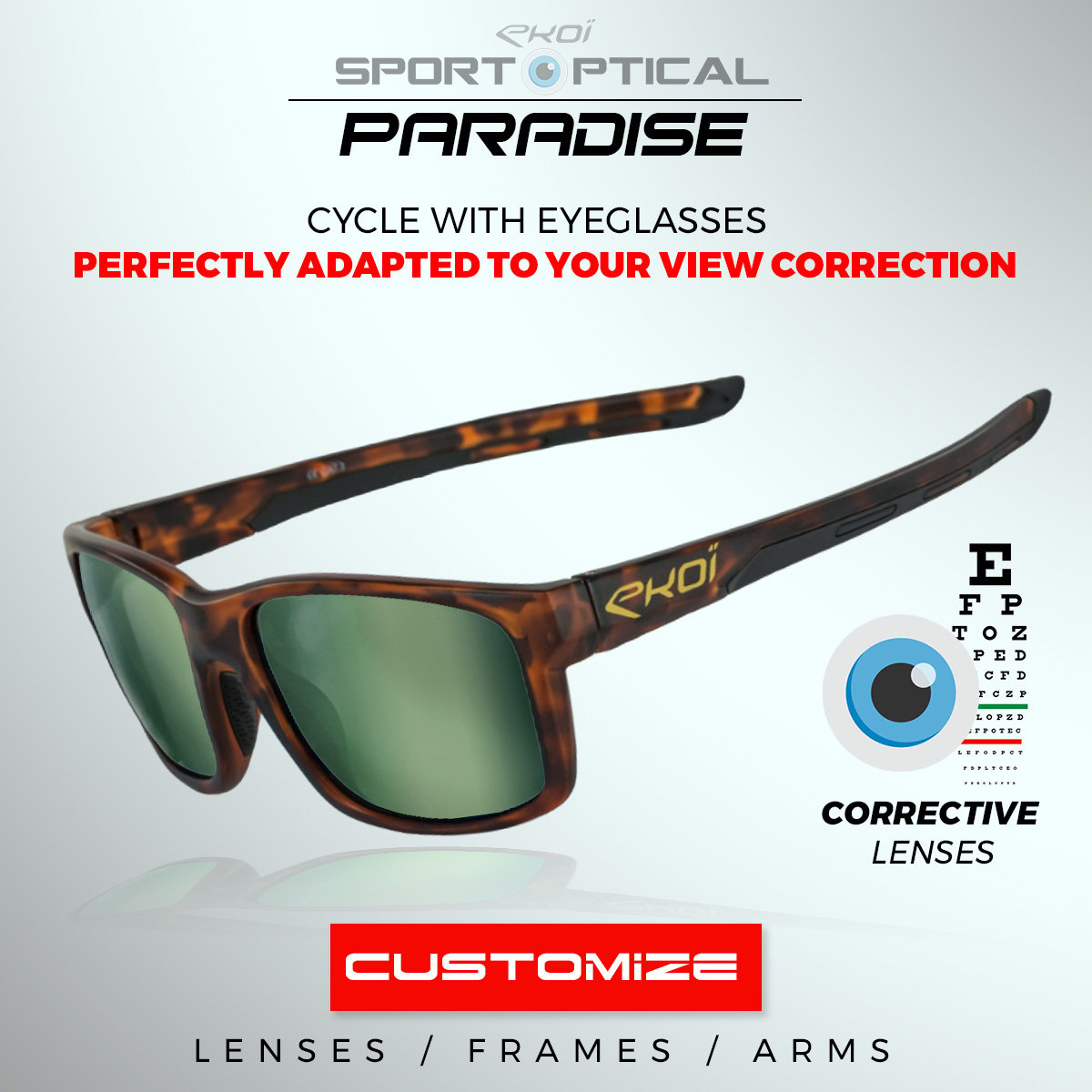If you have vision problems and want to play sports, you must have asked yourself one day: how to adjust my eyesight during my bike rides? For that, we will find out in this article which bicycle glasses to choose for cycling.
Why do you need to wear glasses when cycling?
When cycling, regardless of the discipline, our eyes can be subjected to various projections (dust, gravel, mud, insects, etc.) but also branches when mountain biking. The sun is also considered an external aggression for your eyes. Therefore, it is important to protect your eyes by wearing glasses, even if you don't have any vision problems.
The cycling glasses are specifically designed for the practice of this sport. Thus, thanks to a larger surface area, they offer perfect coverage as well as increased vision thanks to an extra wide field of vision. Moreover, thanks to their materials, they prove to be very lightweight and non-slip so that they don't slip on your nose due to sweat. Not to mention that, like regular sunglasses, they will offer you excellent protection from UV rays.
Can you use cycling glasses when you have vision problems?
Contrary to popular belief, when you are an eyeglass wearer on a daily basis, it is entirely possible to use a pair of cycling glasses to adopt the perfect cycling look. Either you have the option of wearing contact lenses and then you can choose from the many models of cycling glasses; or you are forced to wear glasses and in that case, you will need a pair of cycling glasses with optical correction.
Sports glasses - also designed to be lightweight and durable - may also be suitable in some cases, but we don't recommend using your usual prescription glasses or sunglasses with corrective lenses, which won't be suitable for cycling and could even prove dangerous in the event of a fall, for example.
What system should you choose to have cycling glasses that fit your vision?
If you need to wear bike glasses with optical correction, you will have the choice between two systems, which will thus allow you to find glasses to your nose:
- The bike glasses with corrective lenses;
- The bike goggles with optical inserts.
The choice between one or the other system will depend on the model of glasses chosen but also on your preference and budget.
The optical inserts include corrective lenses for your eyesight and clip on the inside of the glasses, on the bridge of the nose, between your eyes and the outer screen of the glasses. Their price is rather affordable and this choice can be more economical if your eyesight is not stabilized and you need to change your glasses often: in fact, the cost of optical inserts is lower than that of cycling glasses with corrective lenses. Moreover, if you happen to wear contact lenses, you can easily adapt your pair of glasses by removing the optical clip.
But, since optical inserts are quite small, their field of vision is more restricted: if you wear progressive lenses, we advise you to turn to models with corrective lenses instead for more comfort. Also, because of the two layers of glass, the risk of fogging is higher than on a conventional model.
Bicycle glasses with corrective lenses thus offer a larger viewing area and will be lighter. In addition, fogging will be mitigated compared to models with optical clips due to better ventilation.
Nevertheless, for people who need strong correction, cycling glasses with corrective lenses may not be adaptable to your eyesight.
How to choose your cycling glasses.
Once you've chosen your eyewear system, you still have to choose your eyewear model. And this choice of glasses depends on several criteria: your practice (road cycling, mountain biking, etc.), the weather (clear, cloudy, etc.), the technology of the glasses (photochromic, polarizing, etc.), etc.
First, there are two main types of frames among the many models of bike glasses:
- The half rimmed frames (without bottom rims);
- The ringed frames (where the frame encircles the entire lens).
The half-ringed frame has the advantage of being lighter and offering an extra wide field of view which is ideal for road cycling. The ringed frame, which is a bit heavier, has the advantage of being more rigid and therefore stronger which is ideal for mountain biking, for example, where there is a lot of shaking.
Most models have a non-slip bridge on the nose and temples to ensure an excellent fit in spite of perspiration and vibrations. The soft temples can be adjustable on some eyewear models for a perfect fit.
The lenses of sunglasses or cycling glasses are available in several categories, meaning several shades, to suit all weather situations:
- Category 0: these are clear glasses that are best reserved for rainy weather or if you ride at night because they filter very little light;
- Category 1: these are lightly tinted glasses, to be used on cloudy days when the light is low;
- Category 2: these are glasses to be used when the sky is partially sunny and the brightness is average;
- Category 3: these are lenses with optimal UV protection and are the most commonly used because they are suitable for most situations as long as the light is strong.
Some pairs of glasses allow the use of interchangeable lenses in order to adapt to all situations, winter or summer.
When it comes to lenses, there are several technologies. Some of them can be very useful when cycling:
They are also available in a wide range of colors
- The photochromic lenses: they offer great polyvalence because they automatically adapt to the ambient light by switching from one category to another in a few seconds and thus avoid the purchase of several pairs;
- The polarized lenses: they improve contrast perception and offer better visual comfort by eliminating 99% of reflections on surfaces such as water or the road;
- The lens tint: Tinted lenses can prove useful in certain situations. Yellow-tinted lenses increase contrast in low light: they can be useful in winter or at dusk. Brown tinted lenses increase contrast and reduce brightness for use in direct sunlight. Gray tinted lenses do not alter the colors and are therefore neutral lenses par excellence.
When to change the sleeves of his glasses.
Some parts can be replaced on bicycle glasses. If you're wondering when to change your goggle sleeves, you should know that it's possible to do so when they're too damaged rather than changing your pair of glasses.
Now that you know which prescription glasses to choose for cycling, how about whether you should prefer glasses or contacts for cycling?


